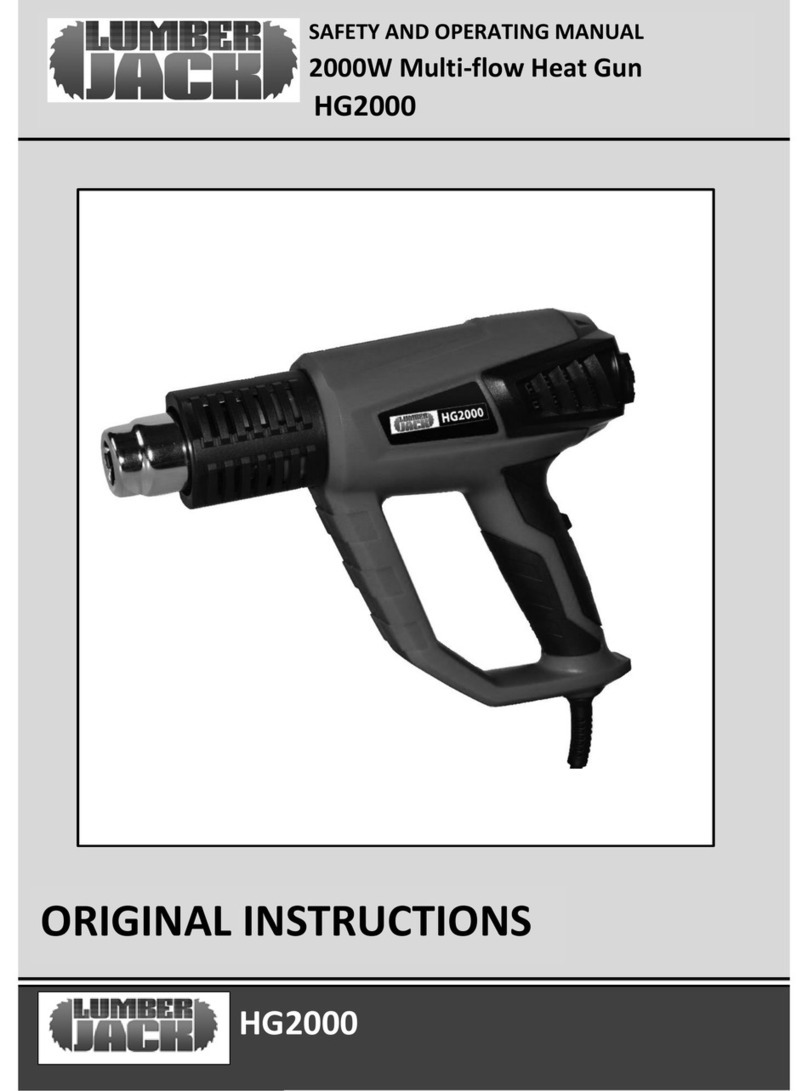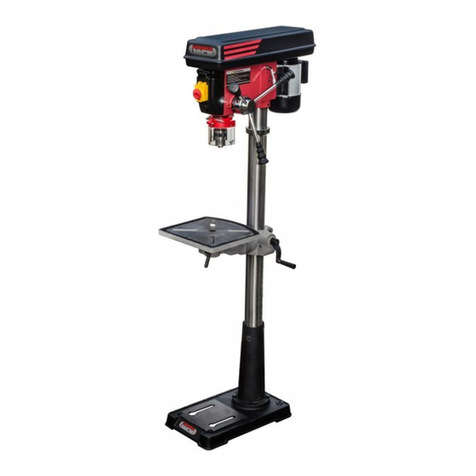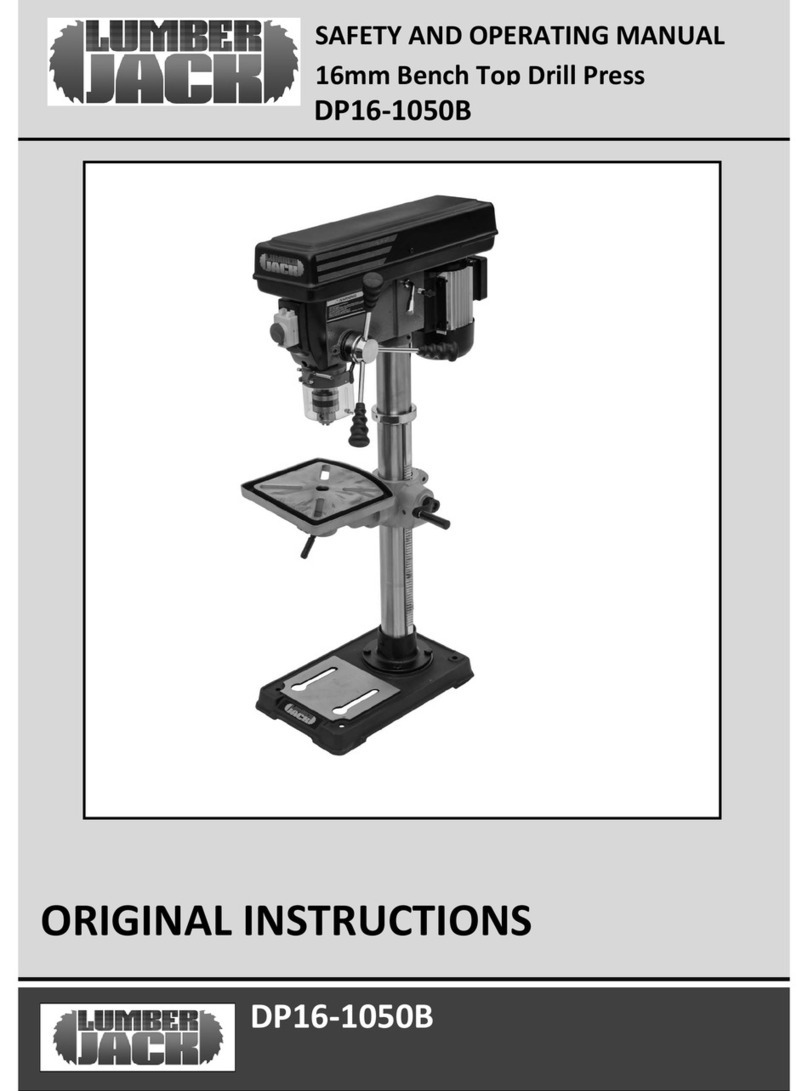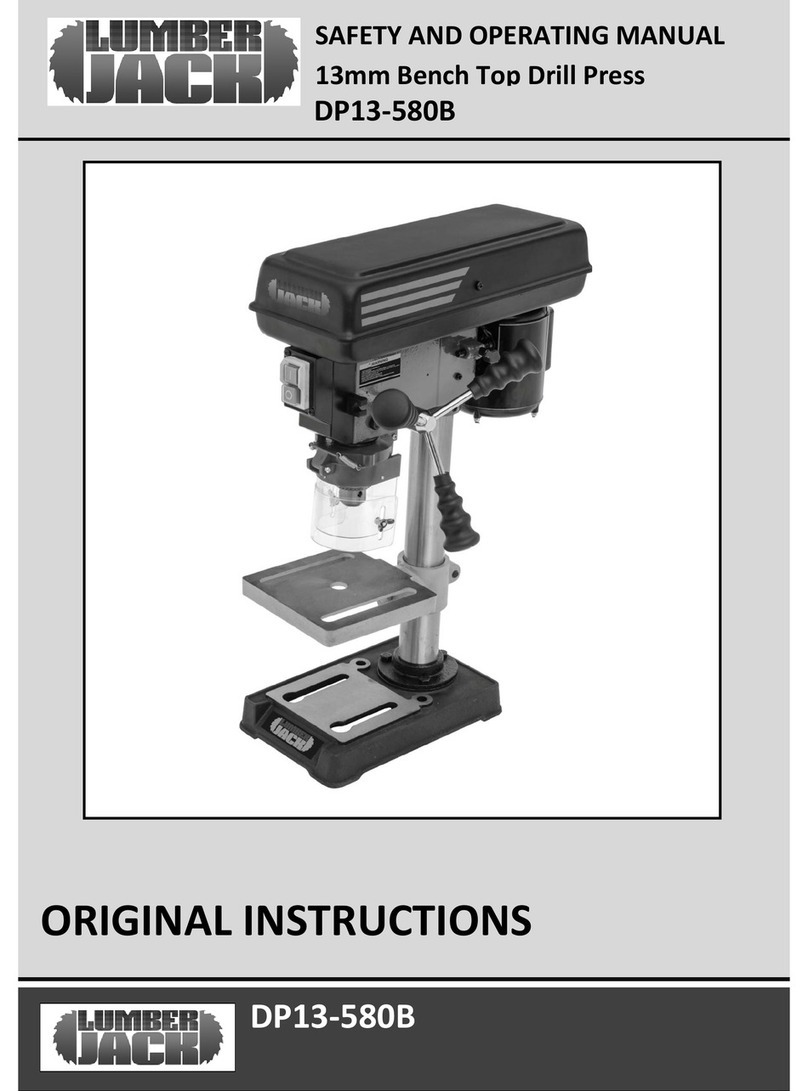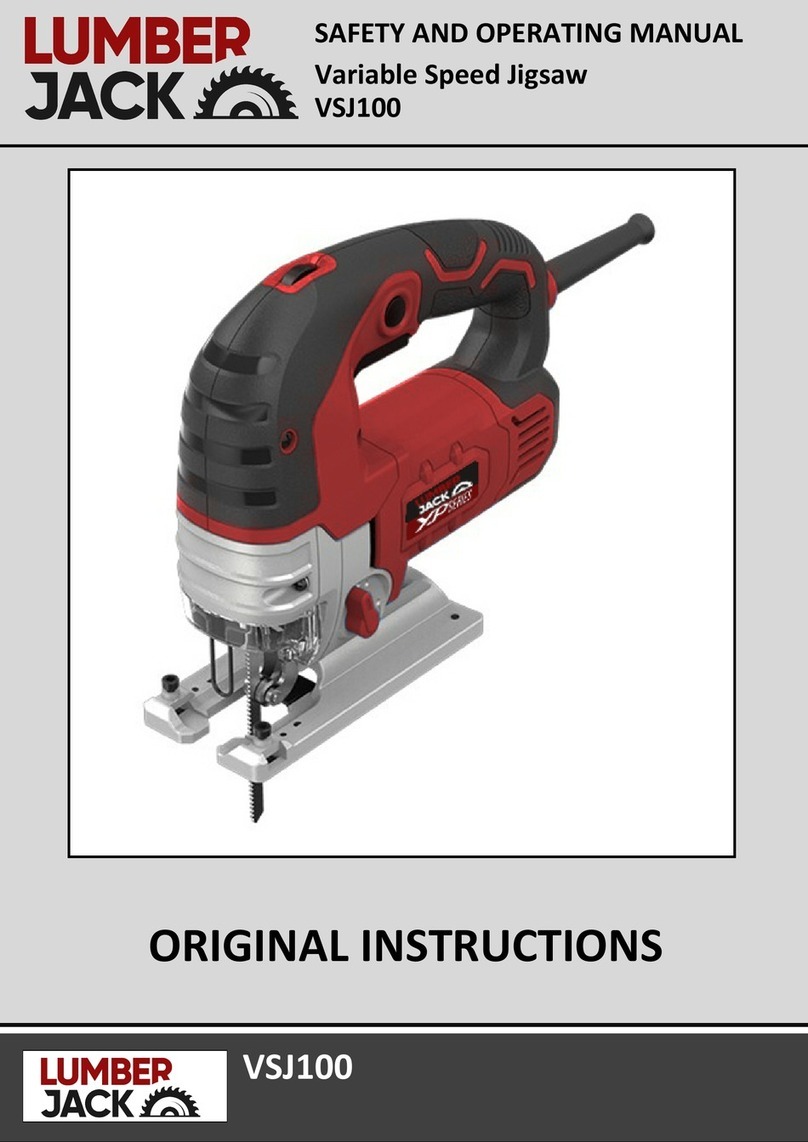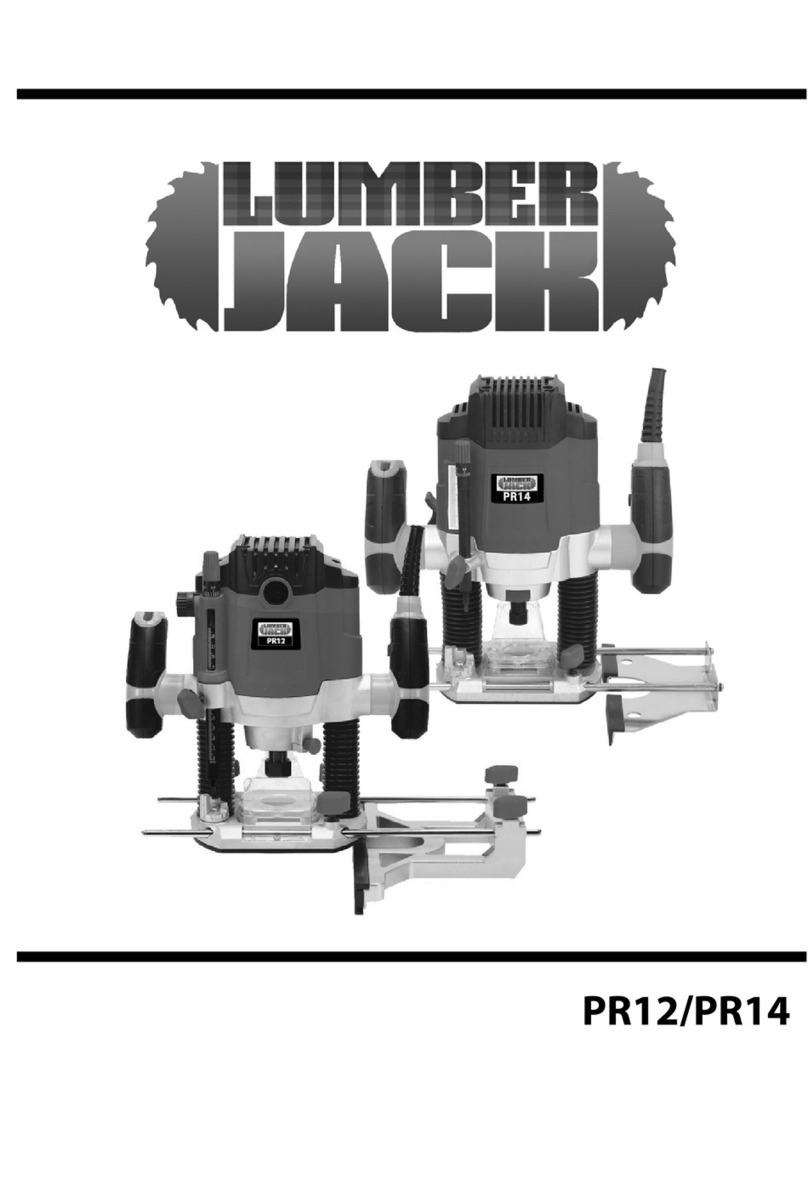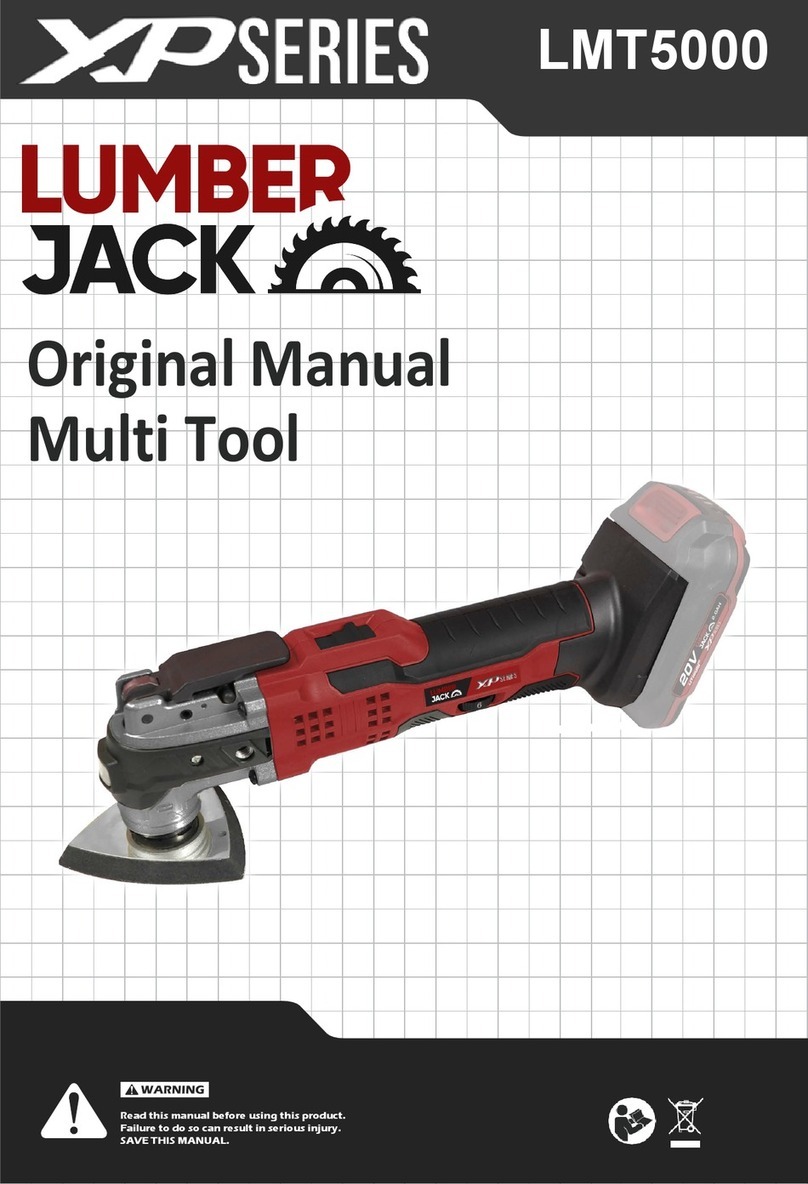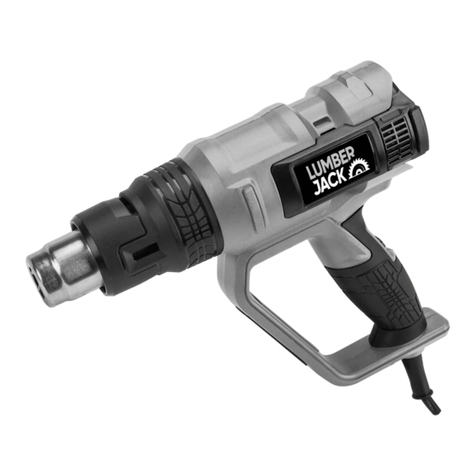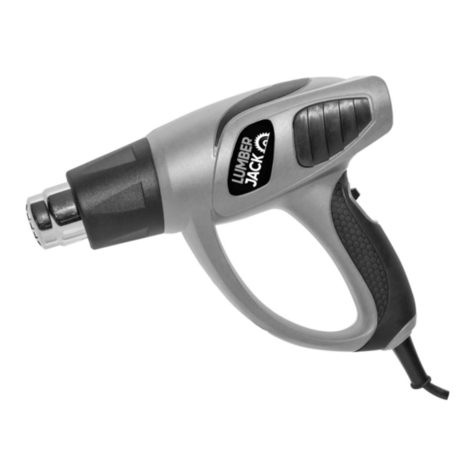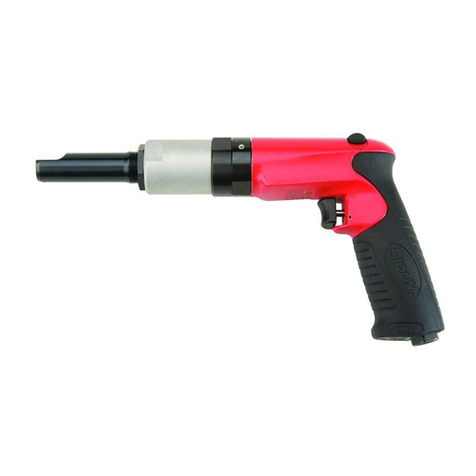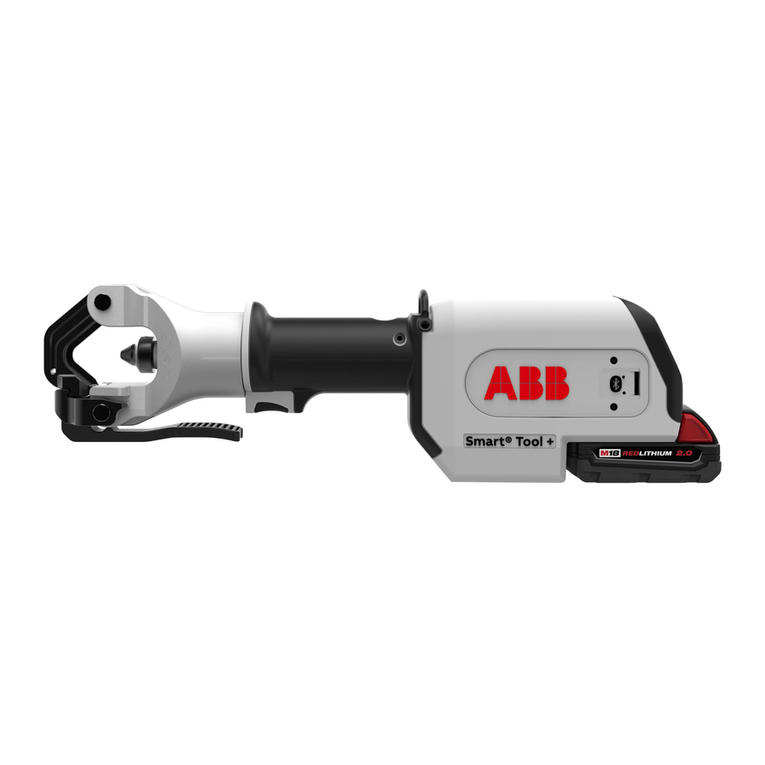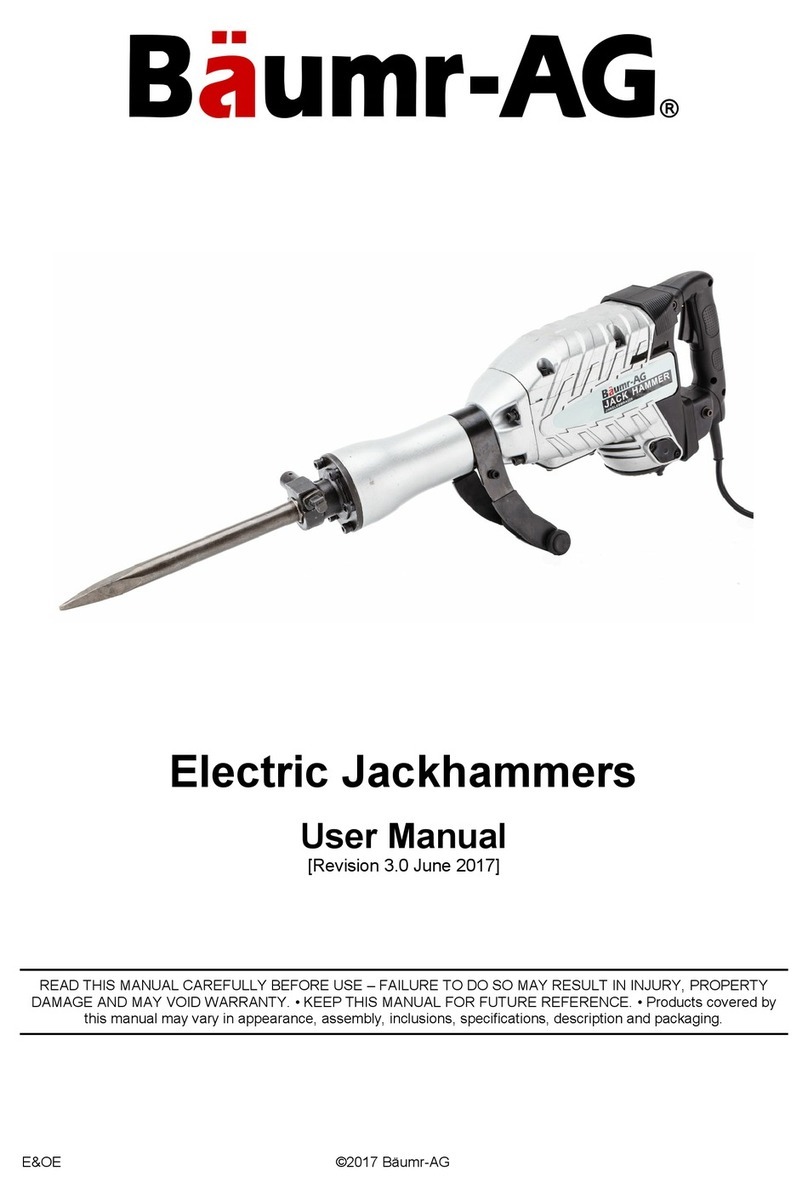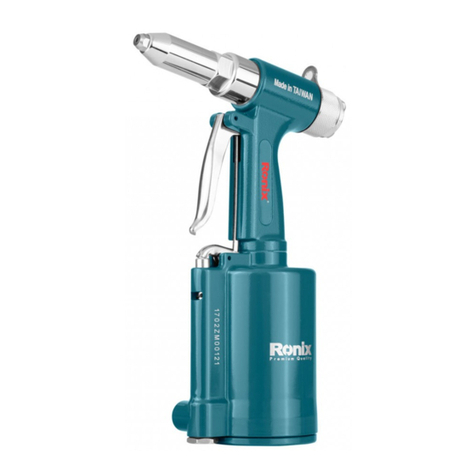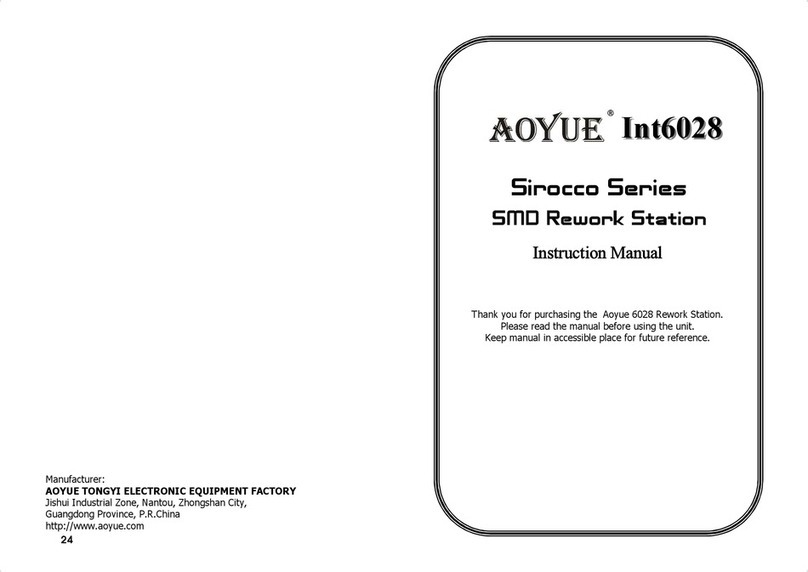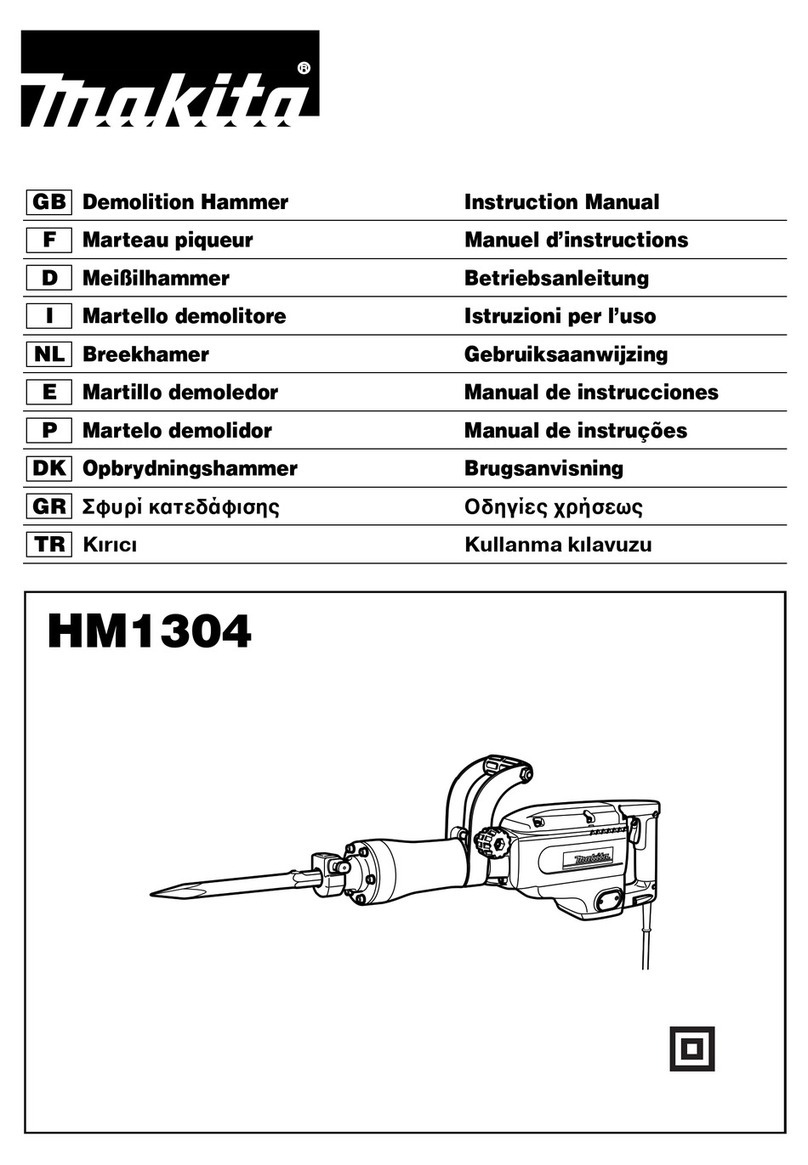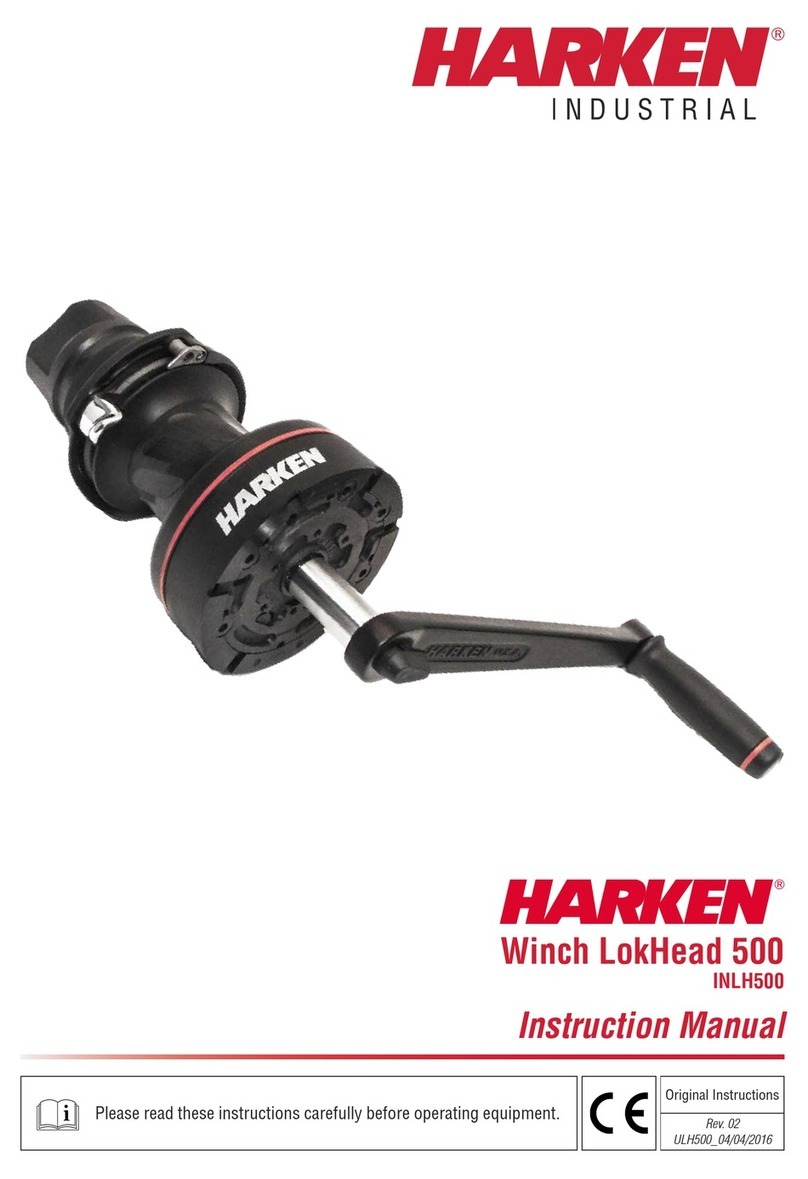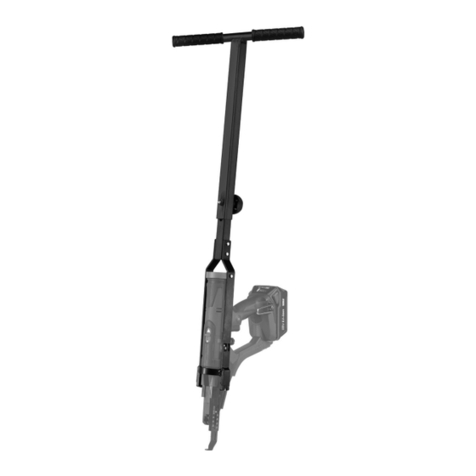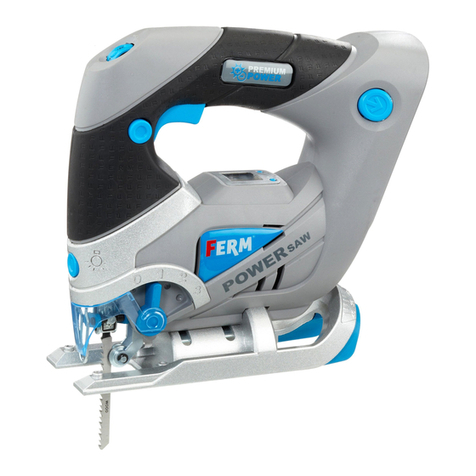
2
GENERAL SAFETY INSTRUCTIONS
Operating this Sharpener can be dangerous if safety and common sense are
ignored. The operator must be familiar with the operation of the tool. Read
this manual to understand this Sharpener. DO NOT operate this Sharpener if
you do not fully understand the limitations of this tool. DO NOT modify this
Sharpener in any way.
BEFORE USING THE SHARPENER
To avoid serious injuryand damage to the tool, read and follow all of the Safety and
Operating Instructions before operating the Sharpener.
1. Some dust created by using power tools contains chemicals known to cause cancer,
birth defects, or other reproductiveharm. Some examples of these chemicals are:
•Lead from lead-based paints.
•Crystalline silica from bricks, cement, and other masonry products.
•Arsenic and chromium from chemically treated lumber.
Your risk from these exposures varies, depending on how often you do this type of
work. To reduce yourexposure to these chemicals: work in a well-ventilated area,
and work with approved safety equipment, such as those dust masksthat are
specially designed to filter out microscopic particles.
2. READ the entire Owner’s Manual. LEARN how to use the tool for its intended
applications.
3. AVOID A DANGEROUS WORKING ENVIRONMENT. DO NOT use electrical tools
in a damp environment or expose them to rain.
4. DO NOT use electrical tools in the presence of flammable liquids or gases.
5. ALWAYS keep the work area clean, well lit, and organized. DO NOT work in an
environment with floor surfaces that are slippery from debris, grease,and wax.
6. KEEP VISITORS AND CHILDREN AWAY. DO NOT permit people to be in the
immediate work area, especially when the electrical tool is operating.
7. DO NOT FORCE THE TOOL to perform an operation for which it was not designed.
It will do a safer and higher quality job by only performing operations for which the
tool was intended.
8. WEAR PROPER CLOTHING. DO NOT wear loose clothing, gloves, neckties, or
jewelry. These items can get caught in the machine during operations and pullthe
operatorinto the moving parts. You must wear a protective cover on your hair, if your
hair is long,to prevent it from contacting any moving parts.
SAFETY INSTRUCTIONS
WARNING
